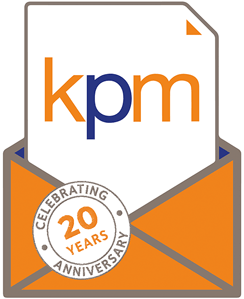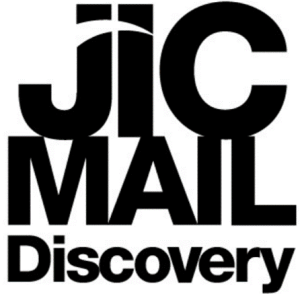Why direct mail is key for the charity sector
UPDATED: September 2024
Charities play an essential role in bringing support and services to those who are most in need. As the sector fights to optimise funds and retain donors, how can charities ensure that their brand can make an impact and invoke action?
Even with the lockdown roadmap, our homes will continue to play an important role in our lives for months to come. In this blog, we look at direct mail as an effective way to reach people at home, optimise fundraising and engage and reactivate donors.
Charity mail services by KPM Group offer tailored direct mail marketing solutions to help non-profits reach their donors effectively and efficiently.
Key issues for the charity sector in 2021
Unsurprisingly, overcoming the impact of the pandemic is the biggest challenge for charities right now. At the start of the crisis, the NCVO estimated that the sector stood to lose around £4bn in income over three months. Now, Blackbaud report that one-third of non-profit organisations are concerned for their survival.
Without a doubt, the sector is facing one of the most challenging times it has ever faced. Yet, two-thirds are maintaining their fundraising budgets and are confident their organisation will recover.
- 70% of charities believe that recovering from the impact of COVID-19 will be their biggest challenge over the next three years
- 69% have concerns that the economic situation will result in fewer donations
- 55% also acknowledged that one of the main challenges in the year ahead will be adapting to new ways of fundraising
The sector has continued to show creativity, resilience, and innovation to survive. Where income has grown, charities attribute it to having the right people with the right skills and being willing to innovate. In fact, 76% of organisations used at least one virtual fundraising initiative for the first-time during lockdown. And the good news is that the majority say they will use it again as it’s been a good way to attract new supporters, as well as engage existing ones.
As we follow the roadmap out of lockdown, we need to look at how charities can not only survive but thrive post-pandemic. Key topics to impact the sector include recovering from the pandemic, optimising income and adapting fundraising, whether virtual or, in time, face-to-face.
Charity sector facts and figures
- There are nearly 169,000 registered charities in the UK
- Charities fund almost half of all UK medical research
- The total income of all charities combined is about £44 billion. This is about £9 billion less than Tesco.
- Around half of all charities have an income of less than £10,000 a year.
Fundraising and the value of print
With so many marketing channels available to your charity, how can you know if you’re making the most of your fundraising efforts and budget? It’s perhaps too easy to think that digital is the only way forward. That print is dead. But let us reassure you that’s not the case. Mail has always delivered a great return on investment (ROI) and still does.
Royal Mail MarketReach have conducted a series of research projects to understand what physical mail means to consumers. It’s fascinating stuff.
“We’ve looked into consumers’ homes and found that mail lives a rich, complex and surprisingly long life beyond the doormat. We’ve looked into their hearts and uncovered the deep emotional responses that are triggered by sensations of touch. And we’ve literally looked into their heads, using the latest neuroscience techniques to discover that mail has a profound and direct impact on the brain.”
Jonathan Harman, MD, Royal Mail MarketReach The Private Life of Mail
Why should charities use direct mail?
With the right messaging direct mail has the power to provoke your emotions. Messages which can reward and excite, shock or concern. Fundamentally, mail can deliver the most important benefit for your charity – driving your stakeholders to take action. Whether that’s increasing awareness; showcasing how your charity makes use of donations; appealing for donations or encouraging engagement with your cause.
Direct mail is GDPR friendly
The good news is direct mail marketing is subject to fewer data privacy restrictions than email. So direct mail is a great way to contact stakeholders who may otherwise be unreachable. There are over 4 million records that the charity sector can mail, and because of GDPR, this data is even more responsive.
Take a look at our post: 10 ways direct mail delivers post-GDPR for more information.
Integrate your direct mail and email marketing
For maximum impact, you need to plan and implement an integrated marketing campaign that brings the best of digital and print together. Mail has long been at the heart of charity fundraising and supporter relationships, and with good reason:
- 96% of all mail was engaged with during lockdown (opened, read, put on display)
- 70% of people respond to mail by going online, driving supporter activity
- 4 times – each item of charity mail is read and revisited 4 times
- 1 week – charity mail is kept in the home for 1 week
- Return on investment (ROI) increases by 12% when mail is included in the mix
While it’s tempting to rely solely on email, email is not a substitute for mail. Both have unique strengths and complement each other, whether you’re using mail for awareness, action, retention or reactivation.
Measuring the success of direct mail
When done correctly, direct mail can be one of the most cost-effective ways for your charity to reach your audience. From the outset you can estimate your response rate so you can determine the quantity of the mailing needed to achieve your goals.
One of the benefits of direct mail marketing is that its value can be measured. You can track your response rate using personalised URLs, response telephone numbers or source codes. For even more information on how you can ensure you achieve the best results with your direct mail campaign, we have 9 tips to maximise your direct mail ROI.
Establish your direct mail KPIs
First and foremost, you should identify the goals you want your campaign to achieve. For example: Raise awareness? Generate leads? Increase donations? Below are 5 examples of direct mail KPIs to help you accurately measure the success of your direct mail campaign:
- Response rate –
the percentage of people who responded to your mail using any of the tracking
methods mentioned above - Conversion rate –
the percentage of respondents who took the action requested in your mailer - Cost Per Acquisition (CPA)– tells you how much it cost to secure each new
stakeholder - Revenue per donation – revenue per donation subtracts the CPA from the average donation to
show how much profit you made from each donation on average - Return on Investment (ROI) – the holy grail of KPIs! ROI will show you how successful
your campaign was.
Don’t forget to record and save the results from each campaign. That way, you’ll be able to compare each campaign’s KPI data and learn how to improve future campaigns.
Direct mail marketing made easy
Let us help your charity with your next (or first) direct mail campaign. Get in touch to talk about our print management service which will ensure you’re getting the best quality and the best value for your budget. We can design, print and manage the entire process on your behalf.
We’d love to discuss our fully managed, bespoke Web-to-Print solution, tailored to the exact needs of your organisation. You can count on our professional knowledge of all things design and print plus our experience of working with charities to deliver your project on time, within budget and without fuss.
Read more
- View our work for the charity and non-profit sector
- Case Study: Providing print management for London’s Air Ambulance Charity
- Case Study: Ensuring brand consistency for St Raphael’s Hospice
- Whitepaper: Get Your Message Heard – Marketing strategies for the Third Sector in the pandemic and beyond
Sources
Mail matters more than ever (Royal Mail MarketReach, 2020)
Helping out in crisis times: How mail can reach people (Royal Mail MarketReach, 2020)
The power of mail for charity fundraising (Royal Mail MarketReach, 2020)





















